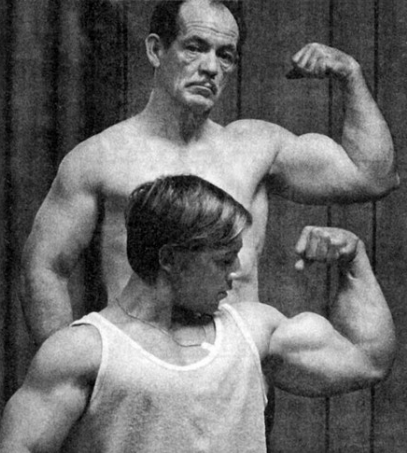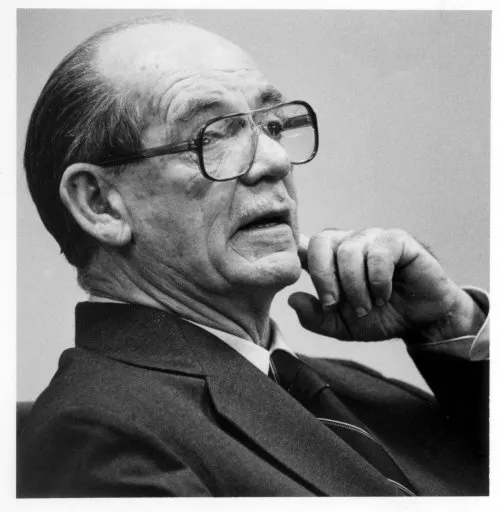“Why 1 Set to Failure Might Be All You Need — According to Mentzer & Jones”


When it comes to strength training exercises, most people are familiar with the traditional approach: multiple sets, high reps, and frequent workouts. This classic method has been ingrained in fitness culture for decades, often associated with building muscle mass and strength. However, there’s a different way of thinking about strength training, one that challenges the status quo and offers a more efficient path to muscle growth: the principles of “High Intensity Training” (HIT) popularized by Mike Mentzer and his mentor, Arthur Jones. They suggested doing a workout till failure, workout suggesting preferably just 1 set for each muscle group to complete muscular failure.
The Traditional Way of Strength Training

Traditionally, strength training programs involve performing multiple sets (typically three or more) of exercises, with a moderate to high number of reps in each set. The goal is to stress the muscles over an extended period, pushing them to failure by the end of each set. This method focuses on volume and frequency, often requiring multiple workouts each week, especially for different muscle groups.
While this approach has proven successful for many, it comes with its challenges. The volume and frequency can lead to overtraining, exhaustion, and longer recovery times. For some individuals, these issues can stunt progress or lead to injury, especially if proper form isn’t maintained or rest isn’t prioritized.
Enter Mike Mentzer and Arthur Jones: The Revolution of High-Intensity Training

Mike Mentzer, a former bodybuilder, was a strong advocate for a revolutionary way of training that drastically reduced the volume of exercise while still delivering impressive muscle gains. This method, which Mentzer called “Heavy Duty,” was influenced by the teachings of his mentor, Arthur Jones, the inventor of Nautilus exercise machines and a pioneer in exercise science.
Mentzer and Jones introduced the concept of one set to failure as the key to muscle growth, challenging the long-standing belief that multiple sets were necessary for optimal results. The principle is simple yet profound: instead of performing several sets of an exercise, you perform just one set per exercise, but you push that set to complete failure, the point at which you can no longer lift the weight with proper form.
The Principle of 1 Set to Maximum Failure – Workout till failure

The idea behind one set to maximum failure is rooted in the belief that muscle growth is primarily driven by the intensity of the effort, rather than the volume of work. By performing a single set with maximum effort, you recruit the maximum number of muscle fibers, thus stimulating muscle growth efficiently. Mentzer and Jones believed that the body doesn’t require multiple sets to achieve the desired effect; instead, focusing on one all-out effort per exercise would provide enough stimulus for muscle growth.
This approach also prevents overtraining. Since you’re working to failure in a very intense, focused manner, the recovery period between workouts becomes even more critical. Overworking the muscles without adequate recovery can hinder progress, but with proper rest, one set to failure can deliver powerful results while allowing the body time to rebuild and grow stronger.
Recovery: The Missing Piece – Workout till failure


One of the most important aspects of Mentzer and Jones’ approach is the emphasis on adequate recovery. Traditional strength training programs often involve training a muscle group multiple times a week, which can lead to insufficient recovery time. Mentzer, however, suggested that muscles grow and repair during rest, not while you’re working out. As a result, he recommended longer recovery periods—sometimes up to several days—before targeting the same muscle group again.
This philosophy allows the body to fully recover and rebuild, avoiding the potential pitfalls of overtraining. It’s an intelligent, scientifically-backed approach that emphasizes quality over quantity.
Why It Works?

The success of this method lies in the combination of intensity and recovery. By training with maximum intensity in one set, you give your muscles a high level of stimulus. But unlike traditional approaches that may induce fatigue without the necessary recovery, Mentzer’s principle of long recovery periods allows muscles to repair and grow stronger, faster.
The focus on intensity over volume also leads to a more time-efficient workout, as you don’t need to spend hours in the gym to see results. Instead, you can achieve muscle-building success in less time with fewer sets, all while minimizing the risk of injury or burnout.
Final Thoughts


Strength training doesn’t have to be a grind of multiple sets and hours in the gym. With the principles of Mike Mentzer and Arthur Jones, you can achieve more by doing less—focusing on high-intensity, one-set workouts and ensuring ample recovery time. This approach not only challenges the traditional way of thinking about strength training but also provides a smarter, more effective path to muscle growth and overall fitness.
By incorporating these principles into your training regimen, you can maximize your results and build strength in a way that is both efficient and sustainable.



Pingback: exercise to reduce belly fat
Pingback: muscle recovery